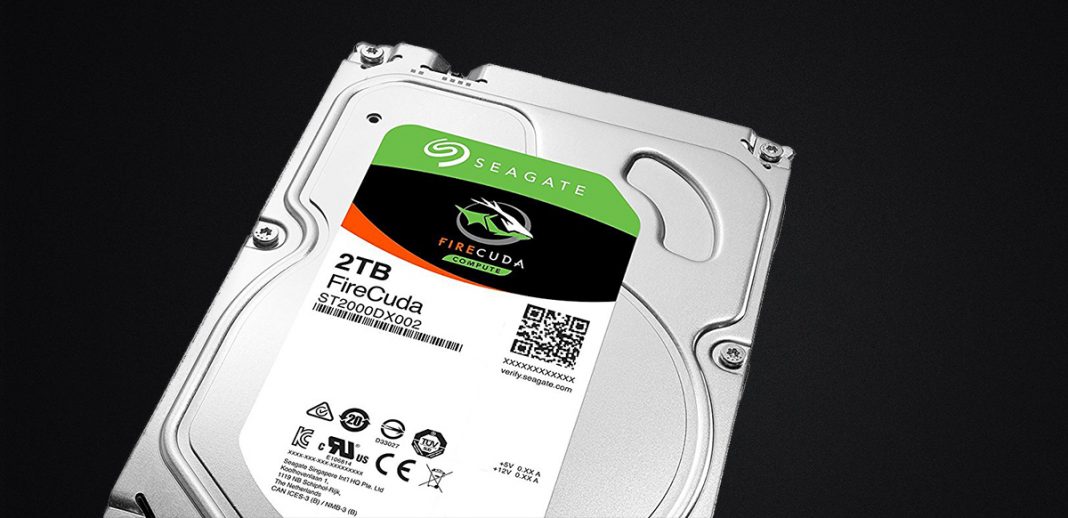Buy the Seagate Firecuda 2TB 2.5-inch internal SSHD from. And you have an aversion to SATA cables dangling out of the rear of your PS4 to a more spacious 3.5' desktop drive, this option strikes. A 1TB 3.5' WD Blue vs. A 1TB 2.5' HGST? Both brands are decent / reliable, so although stuff can happen and you should always have backups, I wouldn't be discouraged from either drive for reliability reasons. The 3.5' drive may be a smidge faster, but will be louder and use more power / generate more heat. I'd go with the 2.5'. Not sure about that particular one but 2.5' are in most cases slower. 0 neiler0847 Reputable. Mar 25, 2015 381 0 4,960 93. Question Brand new Seagate FireCuda 3.5' 2TB drive is not showing up in BIOS, Windows. Started by GamingGod216; May 24, 2019; Replies: 1; Storage.
Traditionally, PC storage is split between the fast and expensive SSD and the super slow but very affordable HDD complete with magnetic tape and needle. The latter is fairly ancient technology nowadays when it comes to PCs and with SSDs continually getting cheaper it's easier than ever to ignore the big old magnetic drives.But, there are still places for such technology. Mostly when it comes to mass storage because they offer much better value per GB.
But there's also a third way: The SSHD, also known as a hybrid drive. This combines a small amount of NAND flash storage, such as you'd find in a regular SSD, with the regular HDD style magnetic tape.The idea is fairly simple: combine the speed benefits of SSDs with the mass volume of HDDs.

The controller in the drive will decide what lives where, caching your most used data on the NAND, but ultimately a hybrid will be faster than a standard HDD.So I grabbed a Seagate Firecuda 1TB SSHD to see what it's all about. It's also important to note that Seagate employs Multi-tier Caching Technology (MTC) to utilize NAND flash, DRAM and media caching technologies to further squeeze the most from the drive.One of the target audiences the Firecuda is pushed at is gamers, folks who want faster loading times than their huge HDDs but without sacrificing capacity. Gamers are also the type of user that will transfer large files once then leave them there, which is an ideal condition for best performance from an SSHD.General file transfers to the mass storage on the drive still chug along the same as they would on a regular HDD. But in benchmarks, it's a little clearer to see some of that performance gain. I'm not about to advocate everyone run out and buy one of these. But there's still reason to.
To be clear, any SSD will be faster than this, and for even budget systems you'll have much faster loading and file transfer times on even an affordable SSD.But here's the kicker. The I previously reviewed costs $278. The 1TB Firecuda SSHD costs $60. In any system, you can save some serious money by combining something like this with a to boot Windows and your key apps from. Overall performance will be slower, but you can get capacity on a budget.The price has always been the most attractive thing about using an HDD in a PC. Combined with an SSD boot drive you get a mixture of mass storage, affordability, and performance.
Seagate Firecuda Reviews
Seagate's own is only about $14 cheaper than the Firecuda, and honestly, that's $14 well spent getting one of these.Be it a laptop or a desktop, if you're hunting for high-capacity mass storage without the price premium of an SSD, a Firecuda SSHD is worth it.This post may contain affiliate links. See our for more details.
Firecuda 2.5 Vs 3.5

Seagate sure doesn't make it easy to answer this question. When you compare the data sheets for the two drives, they list different attributes. I wonder if it's because people care about different things with laptop drives?If all things are equal, why wouldn't you get the smaller drive?.■ it probably uses less power■ modern PC cases have much more creative ways to mount 2.5' drives than 3.5' drivesBut, if all things were equal, why would they even still make 3.5' drives?I'm really curious to see other peoples' responses.